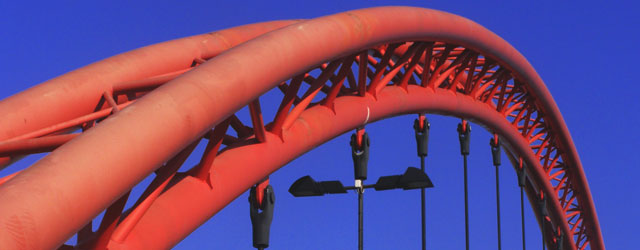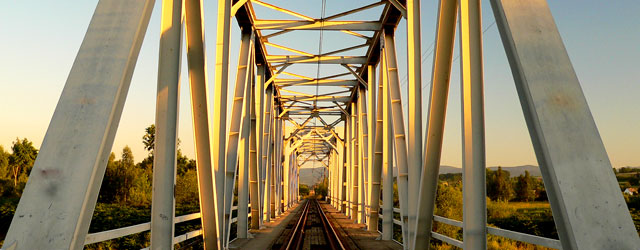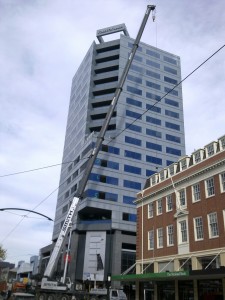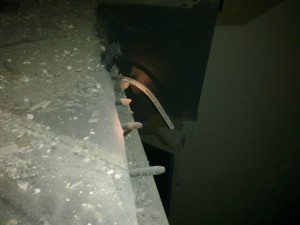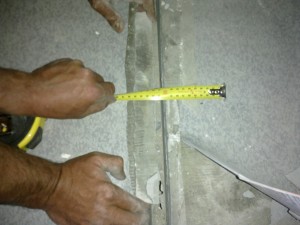Dr Clark Hyland undertook a site examination and materials testing for the Department of Building and Housing soon after the stairs in this 18 storey building collapsed in the 22 February 2011 earthquake aftershock. The objective was to determine the condition of the stairs remaining in the stair well and try to identify possible causes of the damage to and collapse of the stair flights for further investigation and analysis by other parties.
Access could only be obtained by use of a man-cage slung from a crane organised by Hyland Consultants in conjunction with John Jones Steel Ltd. Examination of the stair cavity inside the building required those involved to use safety harnesses tied back to secure parts of the structure.
The concrete stair flights running downwards from the Level 15 Southwest Exit and running downwards from the Level 14 Northeast Exit in the 18 level Forsyth Barr Building either fell during, or were removed following, the earthquake After-shock. The bottom landings of a number of the stair flights had damage consistent with having impacted horizontally end-on with their supporting beams. Items such as polystyrene construction packers, construction debris or mortar infill strips found in some of the seismic gaps would have hindered them from sliding freely horizontally, as the building moved back and forth during the After-shock. During the Stairwell Examination some of the remaining flights were observed to have slumped noticeably by up to 55 mm at the junction of the bottom landing with the first stair riser due to the end on impacts. This would have likely increased with each cycle of earthquake movement and progressively shortened the stair flights leading to their collapse.

